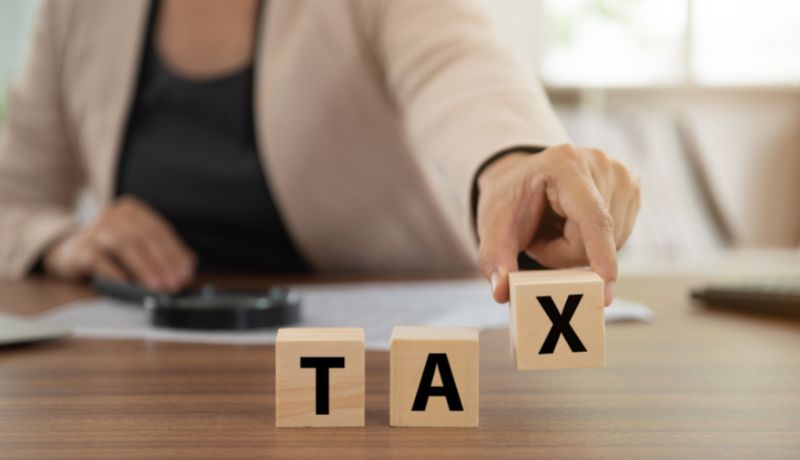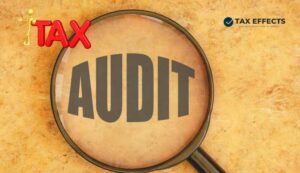If an assessee having taxable income must file an Income Tax Return (ITR) each financial year. After filing the ITR, the income tax department would process the return & check for any errors, omission or mistake in filing ITR. If the errors, omission or mistake in an income tax notice are minor, a summary assessment called Intimation under Section 143(1) can be completed without calling the assessee.
Hence, intimation u/s 143(1) is the most common type of tax notices received from the Income Tax department. On receiving any intimation u/s 143(1), the taxpayer without panicking can take steps to understand the intimation received & further comply with the request received, if any.
In this article we will be understanding thoroughly about the Intimation u/s 143(1) of Income Tax Act,1961.
1. What is Intimation u/s 143(1)?
Section 143(1) of the Income Tax Act,1961 involves the initial assessment of a taxpayer’s return. The Central Processing Centre (CPC), Bangalore calculates total income, tax liability & potential refunds based on the provided information. After the assessment, the taxpayer receives an intimation detailing the computed tax demand or refund. If the taxpayer agrees with the adjustments, then no action is required.
However, if there are any discrepancies or disagreements then the taxpayer needs to provide clarification or file a Revised Return u/s 139(5) or file a response if return filed seems to be defective by the department u/s 139(9).
2. When Intimation u/s 143(1) is issued?
The department will issue an intimation u/s 143(1) if it needs to make any of the following adjustments in the filed income tax return:
- Bogus deduction claim in ITR by assessee;
- Incorrect exemption in ITR;
- Disallowance of expenses claimed in ITR;
- Disallowance of loss claimed in ITR;
- Disallowance of the set-off of losses from the previous year when the return for the related year is filed beyond the prescribed due date.
3. Time Limit for issuing 143(1) Intimation –
The Income Tax Department is required to issue intimation u/s 143(1) within a time limit. Generally, it should be issued upto one year from the end of the financial year during which the assessee files an Income Tax return. However, this period may be extended when the taxpayer’s return is selected for scrutiny assessment or reassessment.
4. What we need to do after receiving 143(1) Intimation?
If assessee have received intimation u/s 143(1)(a), assessee must file a response within the specified timeframe in case any action required to avoid legal complication.
On receiving the intimation u/s 143(1), there’ll be two cases, either you’ll agree with the computation done by the department or you’ll not.
- If you Agree to the discrepancies mentioned in the intimation, this means that you agree with the mismatch. If you do choose this option, you’ll also have to revise your Return of Income.
- If you Disagree with the discrepancies mentioned in the intimation, this means that you’re not accountable for the mismatch & as a next step, you’ll provide accounts that add up to the difference in mismatch.
5. Options available with assessee if not satisfied with 143(1) Intimation –
If an assessee is NOT satisfied with the intimation order u/s 143(1), he will either be required to file a revised return u/s 139(5) or file a response if return filed seems to be defective by the department u/s 139(9). A revised return can be filed for any mistakes committed in filing original return u/s 139(1) by the assessee.
Taxpayer also has an alternative to file an Updated Return u/s 139(8A) maximum upto 24 months from the end of the relevant assessment year alongwith additional income tax payment of 25%/ 50% of income tax amount + interest + late fees payable.
However, if NO mistakes have been made & assessee do not agree with the adjustments made by CPC/computerized system, he/she can file an online rectification application u/s 154(1) intimating the correction of mistake appearing in the Section 143(1) intimation.
6. Some Other Important Points:
– Password to open the Intimation u/s 143(1) – The attachment received is a password-protected file. The ITR intimation password for opening the attachment/file received is your PAN number in lowercase followed by your date of birth in DDMMYYYY format.
For Example: Your PAN is AAGRK5803P and your birth date is 22 November 2003, then the intimation order password to open your online intimation u/s 143 (1) shall be “aagrk5803p22112003”.
– Can demand be issued with 143(1) Intimation –
Yes, Demand can be issued with Intimation u/s 143(1) in case of adjustments made u/s 143(1) due to a discrepancy found & tax liability is arrived at.
– Is Intimation u/s 143(1) and Assessment Order are same –
No, Intimation u/s 143(1) is NOT considered as an Assessment order. An assessment order is issued after a detailed examination of one’s tax returns.
– How to file rectification for intimation u/s 143(1)?
To file a rectification for intimation u/s 143(1), you can use the online facility provided on the e-filing portal of the Income Tax Department. Log in to your account, go to ‘My Account’, and select ‘Rectification’. Provide the necessary details & reasons for rectification & submit your application.
– Different kind of intimations issued by Income Tax Department –
a) Intimation with NO demand or NO refund – This generally happens if the department has accepted the return as filed without carrying out any adjustments to it.
b) Intimation determining demand – Issued in case of adjustments made u/s 143(1) due to a discrepancy found & tax liability demand has been raised.
c) Intimation determining refund – Issued where any tax is found to be refundable either where no discrepancy in the return filed or after making adjustments as referred u/s 143(1) & after giving credit of the taxes & interest paid by the taxpayer.
While demand notice is sent in case of final tax liability, refunds if any shall be granted to the taxpayer.
Happy Readings!
Disclaimer: The information contained in this website is provided for informational purposes only, and should not be construed as legal/official advice on any matter. All the instructions, references, content, or documents are for educational purposes only and do not constitute legal advice. We do not accept any liabilities whatsoever for any losses caused directly or indirectly by the use/reliance of any information contained in this article or for any conclusion of the information.









